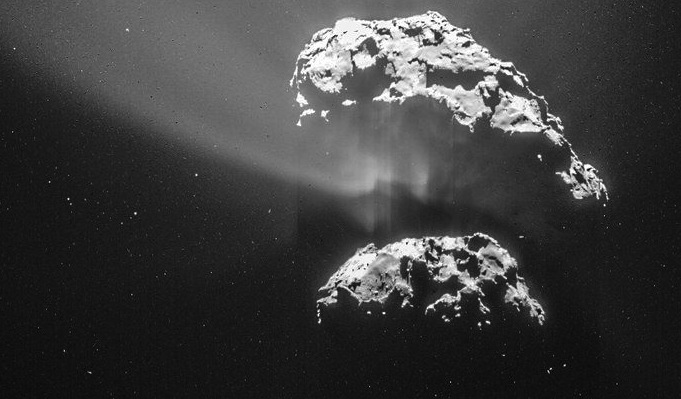BERLIN (AP) — Whatever caused small space rocks to lump together billions of years ago, magnetism is unlikely to be the reason.
Scientists said Tuesday that measurements made by the European space probe Philae, which landed on comet 67P in November, show the comet’s core isn’t magnetized.
Some astrophysicists have suggested that magnetism might have been responsible for aligning and then binding together rocks into larger boulders during the early stages of planet formation.
But in a paper published online by the journal Science, the team led by Hans-Ulrich Auster at the Technical University of Braunschweig, Germany, said their data — which benefited from three unexpected bounces that allowed Philae to collect more results than planned — don’t support this theory.
“If the surface was magnetized, we would have expected to see a clear increase in the magnetic field readings as we got closer and closer to the surface,” said Auster. “If comet 67P/Churyumov-Gerasimenko is representative of all cometary nuclei, then we suggest that magnetic forces are unlikely to have played a role in the accumulation of planetary building blocks greater than one meter (3 feet) in size.”
Allan H. Treiman, a senior scientist at the Lunar and Planetary Institute in Houston, Texas, who wasn’t involved in the study, said the results credibly suggest other forces were responsible.
“Auster did not find any magnetic field, with a very sensitive instrument, so it seems unlikely that magnetism in the solar nebula was significant for the collection of meter-sized objects,” Treiman said in an email. “At that scale, it seems likely that electrostatic or gravitational attraction would be stronger.”
The findings are part of a series of scientific results obtained by scientists analyzing data collected by the Philae lander and its mother ship Rosetta, which is flying alongside the comet on its elliptical orbit around the sun.
Copyright 2015 The Associated Press. All rights reserved. This material may not be published, broadcast, rewritten or redistributed.









